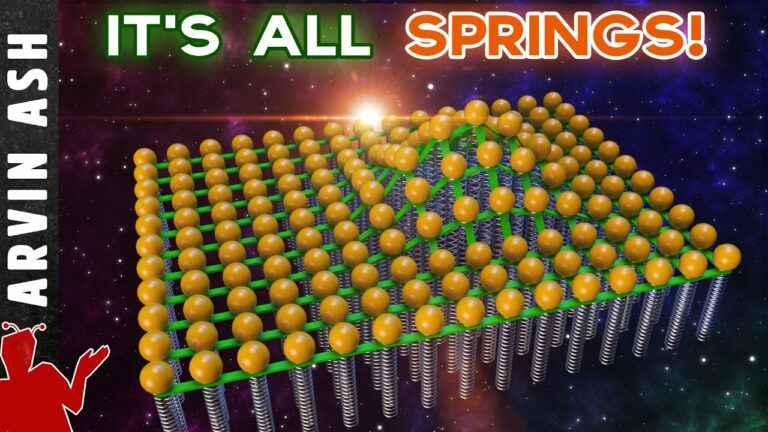Everything – Yes, Everything – is a SPRING! (Pretty much)
Why Everything in the universe is a spring (kind of). Why everything is a spring. Classical springs like you might have in your mattress have a harmonic oscillation. And this behavior has a quantum mechanical analog in what’s called a quantum harmonic oscillator. And this model of the motion in quantum mechanics can model the motion of all fundamental particles in the universe, as well as the forces mediating the interactions between them. In fact, the prevailing fundamental theory of all matter and forces, called Quantum Field Theory, is built upon this type of motion.
But what happens if we now go to the quantum realm? The equation of energy for a quantum particle looks almost identical to the classical case. Except, now it is expressed as, H, the Hamiltonian, instead of E, energy. The difference is that the Hamiltonian is an operator. It has to operate on something to determine how its energy is evolving. In the case of quantum particles, the Hamiltonian operates on the wavefunction, since the wavefunction shows how a particle evolves over time.
So how do we show that the same spring-like behavior applies to quantum fields? The astonishing part is if you write a quantum field theory for a simple field, then you get a Hamiltonian this is almost exactly what we have in the quantum harmonic oscillator or quantum spring. But now it’s for a particle field. What’s different is that in the case of quantum fields, since they extend everywhere in the universe, it has to be integrated over the three dimensions of the universe.
But unlike quantum mechanics, where the number of particles are fixed, in quantum field theory, the number of particles in the system can change. We can add particles by adding energy to the field, or annihilate a particle by removing energy from the field.
This aspect of quantum field theory is incorporated in the “a” and “a dagger” part of the equation. They are also known as the creation and annihilation operators. “a” is the creation operator and “a dagger” is the annihilation operator.
What the Hamiltonian equation shows is that quantum field theory is essentially an infinite collection of harmonic oscillators or springs, extending out to all of spacetime in all 3 dimensions. Because it’s quantum it will never be still, so there is always some small oscillation or vibration in the ground state, which is the lowest state. This minimal oscillation represents quantum fluctuations, also known
as virtual particles.
If we give the spring a punch on the order of Planck’s constant, it will excite the spring to the next state, the one particle state. The spring now has a higher amplitude to indicate the extra energy we have added.
We can punch it an infinite number of times to increase the state to equal to 2, 3, 4 and so on particles. The amplitude can only be integer multiples of the Planck’s constant. This is the quantum world; everything is in steps ensuring, we have a discrete number of particles.
We can now imagine that this mattress is of infinite size. We can have waves representing particle motion and some of the waves can collide illustrating particle interactions.
And if you can imagine 12 mattresses of infinite size, these would represent all the matter particles of the standard model.
Furthermore, we would have more mattresses that would act as intermediaries to exchange energy from one mattress to another. These represent the bosons of the standard model. So in quantum field theory, everything is essentially just springs.
But unlike the classical springs, the energy levels of the quantum field oscillators are not continuous. They are “quantized”, that is, their oscillations are in discrete quantities proportional to Planck’s constant. These discrete units, when localized, manifest themselves as particles.
Do not forget to share your opinion with us to provide you with the best posts !




0 Comments